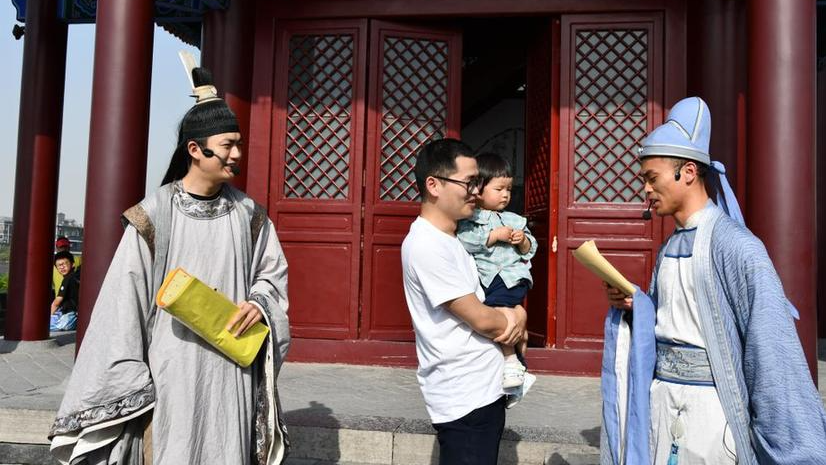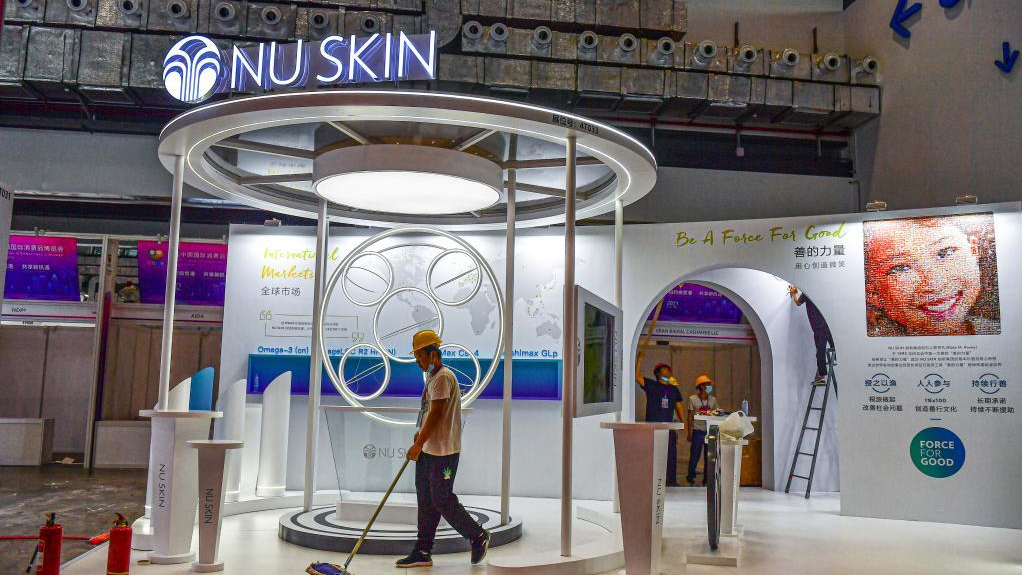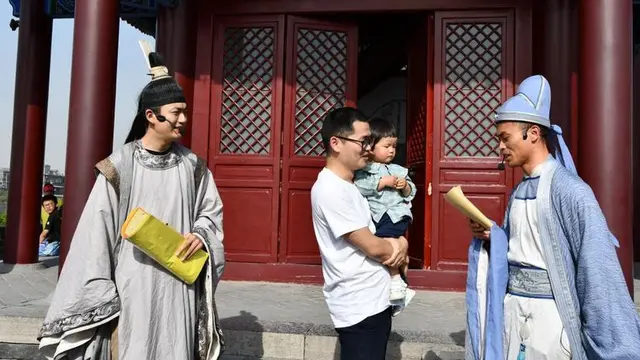
Tourists visit the city walls of Xi'an, northwest China's Shaanxi Province, May 1, 2021. /Xinhua
Editor's note: Dr. John Gong is a professor at the University of International Business and Economics and a research fellow at the Academy of China Open Economy Studies at the University of International Business and Economics (UIBE). The article reflects the author's views, and not necessarily those of CGTN.
The Labor Day holiday weekend turned out to be a delightful blessing for national consumption. Virtually everything came back with a vengeance as the latest statistics show. Just on two days for May 1 and 2, the total transaction volume by ATM cards increased by 5.5 percent over the same period last year, and the transaction volume on the two online payment platforms, Alipay and WeChat Pay, increased by a whopping 45 percent. Expenditures at restaurants and shopping malls also significantly increased.
Tourism, which has been hit hardest so far by COVID-19, is finally coming back. According to the largest online tourism booking platform Ctrip, 200 million people booked domestic trips, with Shanghai, Beijing and Sanya in Hainan Province being the top three travel destinations. Surprisingly, this figure is even higher than pre-epidemic numbers.
Hainan benefits particularly well from the mini-boom in tourism in recent months, as manifested in its duty-free shopping figures. According to the Haikou customs, in three days from May 1 to 3, there were altogether more than 65,400 shoppers spending a total amount of 485 million yuan, an average of 7,431 yuan per shopper. That is a lot of money. The total duty-free shopping amount reached 15.4 billion yuan in the first quarter, increasing by 416.6 percent over the same period last year.
Not only is it a good news but also a bit disheartening as due to the epidemic, the money that would have been spent in Paris, London, Dubai, Bangkok and other trending metropolises around the world was instead spent right here inside China. Hainan has been the primary beneficiary.

Workers prepare the venue for the first China International Consumer Products Expo at the Hainan International Convention and Exhibition Center in Haikou, south China's Hainan Province, May 1, 2021. /Xinhua
But in a way China's domestic market deserves this money shelled out by consumers because we indeed have weathered through this epidemic much better than anywhere else in the world. Ever since April 2020, China hasn't seen a significant second or third COVID-19 wave haunting this country, barring a few mini-outbreaks here and there that had been resolutely quelled, while much of the rest of the world is still struggling, especially India and other South Asian countries where COVID-19 virus variants are on a rampage.
Moving forward, the good news on Labor Day begs the question whether Chinese consumers will continue to rush to unleash their spending desires after all restrictions on people's movement are lifted due to the successful control of the resurgence of the epidemic. The answer is obviously a resounding yes, if we are able to continue to be successful at holding the viruses at bay at our airports, borders and port entry points.
At the same time, the idea that China can benefit from diverting international travels and consumption to domestic ones just because of the differences in defeating the pandemic home and abroad is indeed shortsighted and selfish too. No matter how well we do at home in the short run, the economic recovery would not be sustainable if the rest of the world does not fully recover. That is why we still wish for the best to our neighbors. That is why we need to extend a helping hand to India in terms of providing oxygen supplies, ventilators and other much needed medical equipment in addition to being empathetic toward their suffering.
(If you want to contribute and have specific expertise, please contact us at [email protected].)
 简体中文
简体中文

